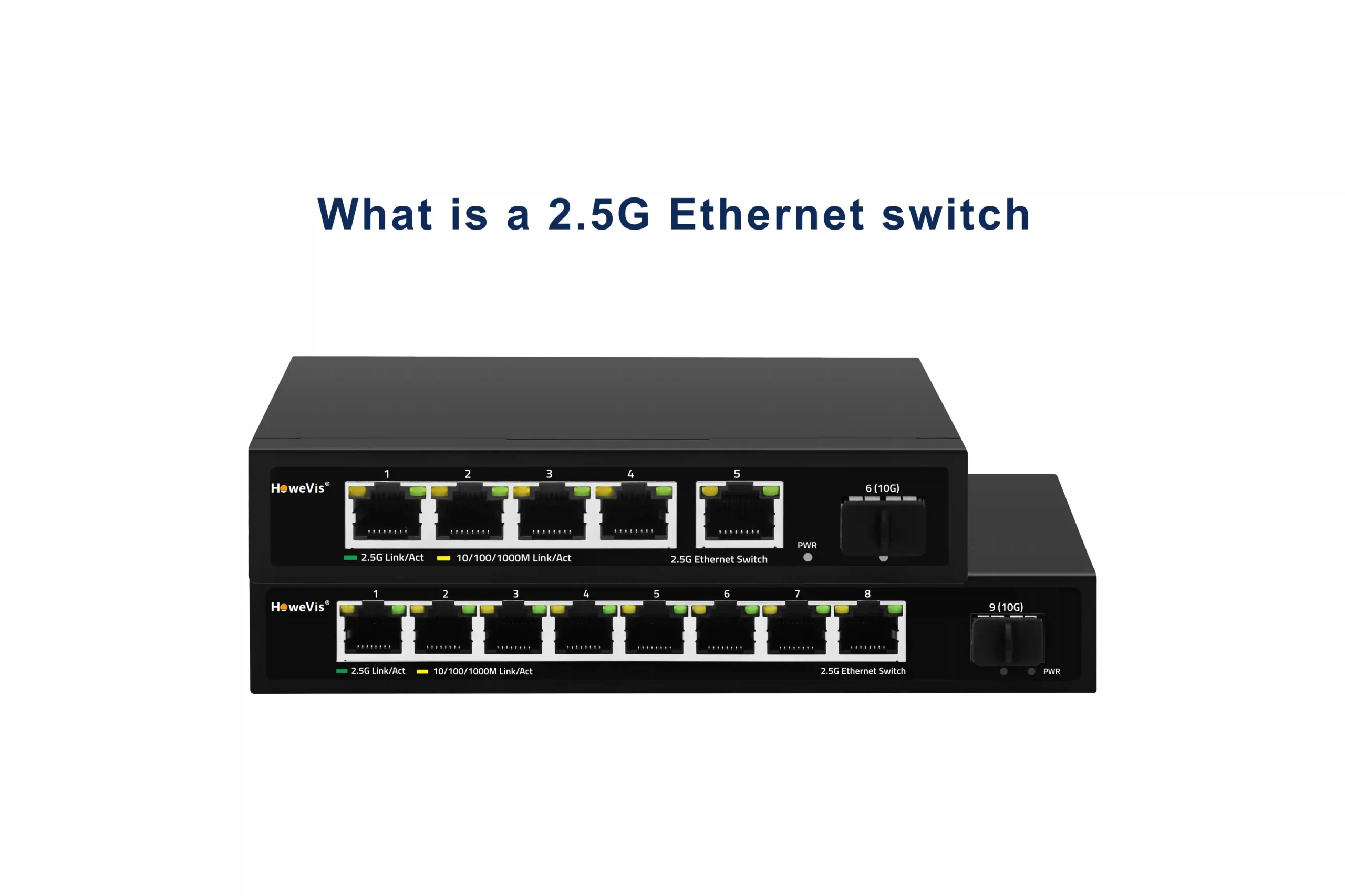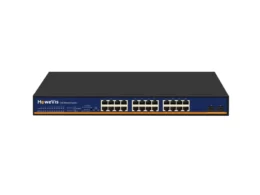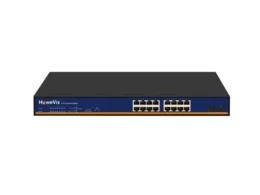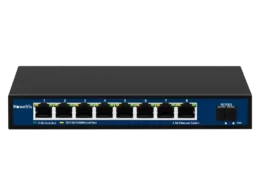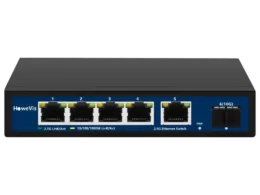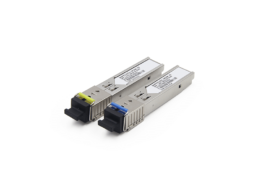Fast Ethernet, Gigabit Ethernet, and 10 Gigabit Ethernet are all technologies to satisfy our data networks’ requirements. The question is — Are these sufficient?
Suppose they are not. But, we have high technology such as 40GbE and above. That’s not all. Shortly, I am sure we will have the terabyte data speed to accomplish our tasks in the blink of our eyes. Do you know the goals of such higher data speeds? They don’t mean to provide only the data connection. Instead, we grab the network stability and lower latency to support our live streamings and gaming.
This article will explore the Multi-Gig Ethernet and explain the 2.5GbE in detail.
What is Multi-Gig Ethernet?
2.5GbE is the multi-gig Ethernet but not the only multi-gig Ethernet.
Instead, multiple data technologies comprise Multi-gig Ethernet. Let me define the concepts of multi-gig Ethernet so you can understand them.
Multi-gig Ethernet is an Ethernet system that facilitates data speeds between 1GbE and 10GbE. I am talking about IN BETWEEN Speed, not the 10GbE speed only.
Can you guess the exact data speed of the multi-gig Ethernet?
It can be 2.5GbE, 5GbE, or 7.5GbE.
Here is another critical question. Why do we need multi-gigabit Ethernets when we have 10GbE, 1GbE, or Fast Ethernet? Why multiple gigabit Ethernet?
We always look for a more economical and long-standing option that perfectly matches the requirements. Especially at home, we don’t have higher data requirements. Similarly, data centers have higher standards. 2.5GbE is less expensive than 10GbE, fulfilling two purposes.
- Higher bandwidth support is needed to streamline the data experience.
- It is a cost-effective option that perfectly matches our codes.
Therefore, we have the 2.5GbE and other Ethernet technologies, such as 2.5GbE.
How do we differentiate the 2.5GbE from Multi-Gigabit Ethernet?
2.5GbE falls inside the category of Multi-gigabit.
We can differentiate it based on multiple factors, such as data speed. The maximum data speed for the 2.5GbE is 2.5 Gbps, while other multi-gigabit technologies can support up to 7.5 Gbps.
2.5GbE is backward compatible. You can enjoy the lower limit of Fast Ethernet, 10 Mbps, while the maximum data speed is 2.5 Gbps. This means it is fast Ethernet and Gigabit Ethernet simultaneously. It seems to be an excellent option, right?
What is a 2.5G Ethernet switch?
2.5G Ethernet switch? You might have rarely heard about this multi-gigabit Ethernet. Do you know why? Because people only know about the 1GbE and 10GbE.
Let’s find out what precisely the 2.5G Ethernet switch is.
2.5 Gigabit Ethernet switch refers to the bridge that links the Ethernet devices over the LAN or WAN and provides flexible data speed depending on your requirements.
You can alter your data speed according to your preferences. Moreover, it is a network switch that requires a 2.5GbE port to connect your devices and build a 2.5GbE network.
How does it work?
The Institute of Electrical and Electronics Engineering has defined the working mechanism of this technology, along with other technologies.
Do you know the IEEE standard for this technology? The working standard is IEEE 802.3bz, which operates this technology.
To get the data speed, you have to build an Ethernet network. The question is, how do you make a 2.5GbE network that allows the switch to work in it?
I will explain what you need for your 2.5GbE Ethernet network and the different steps to build it.
3 Things are essential to building a 2.5GbE Ethernet network.
To build a network at home or in the office, you must have the essential tools. An Ethernet switch is not enough. Instead, it would be best to consider port 2.5GbE, compatible devices, and many more.
Let’s find out what three essential tools you need.
Ethernet Devices
Computers, laptops, or smartphones do what? Drain the data connection. The same concept is here.
Having the right tools to get the data speed would be best. It would be best to have a Smartphone or gaming setup at home to get the data connection.
However, the devices can be:
- Computers
- IP cameras
- Smartphones
- No matter what other device you want to use for drawing the data from the Ethernet technology
Remember. If the device is Ethernet compatible, it can get the data connection. Otherwise, there will be no data connection for the devices.
Ethernet Switch
The ethernet switch is not unique except for the hardware tool that connects computer devices and provides them with a high-speed data connection.
Since you are considering the 2.5GbE, you must ensure that the Ethernet switch supports the 2.5GbE. If the switch supports 10GbE, it still might not provide 2.5GbE. Therefore, you must have multi-gigabit Ethernet.
Ethernet ports
Ethernet ports are cables that must be compatible with your given Ethernet technology. The Ethernet ports can be:
- Cat 5e
- Cat 6
- Cat 7
- Cat8
The minimum requirements for the 2.5GbE are Cat5e. If you don’t have this or higher versions of Ethernet ports, you might not get the data connection since the ports are incompatible. However, each Ethernet port has RJ45 connectors that help it connect on both ends— one with the device and the other with a switch.
Router
Do you want to optimize network performance? If so, the router must be part of your network. Do you know what routers can do?
They:
- Analyze the incoming data packets
- Process them through different protocols
- Sends them to the destination device
The ultimate goal of the router is to decrease bottlenecks and provide the network with higher performance. Without routers, potential network performance might be lost.
3 Steps to get the data speed from the 2.5GbE switch
Once you have all the tools, it is not enough. We must integrate our tools and get the data speeds to ensure the network.
Let’s climb the different steps to build the 2.5GbE.
Step 1: Check all your devices are working fine.
Set up all your tools in the right place. For instance, if you have an IP camera, you can install it outside the office. Similarly, you can move ahead to build the connection.
Step 2: Build Links
Now, the Ethernet ports are used to build the connection.
The Ethernet port has RJ45 connectors on the end. You can connect the device to the switch via the Ethernet port. The existing Cat5e can also be used in this case.
With existing Cat5e, you only have to connect the devices.
Step 3: Check if you can get the data or not.
Once you have built the connection, why not check it? If the tools are working fine, you can get the data connection. If these are not, your relationship might not be able to get the link.
2 Types of 2.5G Ethernet Switch
There are different types of 2.5G Ethernet switches, each owing to its working mechanism, configuration, and features.
Therefore, we have two fundamental types of 2.5GbE switches—managed and unmanaged Ethernet switches.
Let’s know more about them.
Unmanaged Switch
An unmanaged switch is the most straightforward Ethernet switch that requires no IT experts to install.
It is an inexpensive switch with all the major features available in the Ethernet switch. You can get the SECURITY, DATA SPEED, and many more features you need for your networks.
With unmanaged switches, you have some restrictions. These are not configurable. That means you have to rely on the switch as it is. You can’t change any of its features, including speed and many other aspects. The biggest disappointment is the wasted extra power and bandwidth if your device does not require higher speeds.
However, unmanaged switches are part of typical home networks and simple office networks. For a more extensive network, you can’t employ them. Therefore, you should consider any application regarding your network depending on various factors, such as usage, features, and configuration.
Managed Switch
A managed switch is different from an unmanaged switch.
Instead of installing the plug-and-play switch, you can use the managed switch that offers access to configurations. You can try these switches and change all the settings according to your preferences. The power consumption and data connection will be optimal in that condition because you are using the things according to your situation.
I have listed crucial points about the managed switches.
- The managed switches are configured according to your preferences.
- It would be best to have IT experts to operate and install them.
- These switches are expensive compared to unmanaged switches.
You can use these switches to unleash the full potential of Ethernet. However, what are their applications?
You can use these switches in places like:
- Industrial Ethernet networks
- Heavy traffic networks to optimize the performance and change the settings
- Enterprises and data centers have these Ethernet switches according to the given situations.
4 Crucial Features of the 2.5GbE
2.5GbE has several features related to its compatibility and range. We can check it out and decide whether it should be our choice.
Here are the different features of the 2.5GbE to know.
Maximum Range
Maximum range refers to the area of connection. For example, if you have a Wi-Fi connection at home, you often have observed a decrease in the strength of Wi-Fi signals if you move some meters away from your connection.
The range defines the distance in which you can get the signals. Ethernet has a maximum range of 100 meters, which is more than sufficient to fulfill all the tasks.
The 2.5GbE’s maximum range is 100 meters. In this range, you should expect the connection’s maximum strength and data speed.
Port 2.5GbE
Ethernet has multiple cables. You can differentiate them on various parameters. For example, you can differentiate them into copper wires and optical fiber systems. Moreover, shielding and non-shielding are other phenomena that differ between ports.
However, we have a universal division of the Ethernet ports. These can be the Category ports. Cat1 to Cat8, we have all the cables to fulfill your requirements.
So, what Category of Ethernet ports support the 2.5GbE?
The standard port of 2.5GbE is Cat5e. At its maximum data speeds, it can provide a range of 100 meters. However, the following cable types are compatible.
You can use all these ports to get the data connection within the given range of 100 meters.
Maximum Data Speed
In real-life examples, the Wi-Fi 6 has a maximum speed of 749 Mbps. Thus, we can determine the maximum data speed you can get from the Ethernet network.
As the name indicates, it has a maximum data speed of 2.5 Gbps. But that is not the case when you need varying data speeds.
The remarkable fact about 2.5G Ethernet is its compatibility with Fast Ethernet and Gigabit Ethernet. Therefore, upgrading previous networks becomes easy.
So, you can get the following data speeds.
- 10 Mbps
- 100 Mbps
- 1000 Mbps
- 2500 Mbps
It is the varying value of data speed at 2.5GbE.
Maximum Bandwidth
Do you know what bandwidth is? Bandwidth refers to the volume of information sent over a unit of time. Never confuse it with data speed—NEVER EVER!
The biggest pro of the bandwidth is network support. With higher bandwidth, you can send a high volume of information and support the higher network speed. Even games and large files consume a higher bandwidth.
If I talk about the 2.5GbE bandwidth, it is higher than Fast Ethernet and Gigabit Ethernet but less than the 10GbE. So, you must be sure of your network speed and employ this technology.
Backward compatibility
Backward compatibility? Isn’t it confusing? No. The term itself indicates what is meant by backward compatibility.
Backward compatibility is a phenomenon in which the network technology is compatible with its older version.
The 2.5GbE is backward. Do you know how?
It can support FAST ETHERNET and 1GBE, which are older versions of Ethernet. Therefore, 2.5GbE is backward compatible. So, isn’t it surprising that you can get Fast Ethernet and 1GbE from this single technology?
6 Applications of 2.5G Ethernet switch
The 2.5GbE switch offers data connection to a wide range of industries. However, I have listed the applications of the 2.5GbE switch.
Industrial Ethernet Networks
Industrial zones have what? Continuous processing of machinery, right?
Let me tell you about a plastic bag factory.
Hundreds of devices synchronize in a plastic bag factory according to PTP protocols. One device acts after the other. The production machines are different from the processing and packing machines. Since we have to connect the devices, let them work chronologically.
A single failure would lead to severe issues. Even it can stop all the synchronized devices. If it doesn’t stop, the whole production process will be randomized and irregular, and ineffective plastic bag manufacturing will start.
After reading it all, we haven’t studied anything about using Ethernet. It seems there is no need for a data connection. But that is not true. Do you know how?
To let the devices work accurately and timely, we have to monitor them. And how do we monitor them?
For a REAL-TIME monitoring setup, you must have a fast data connection. And that connection is a feature of Ethernet that fulfills all the conditions.
A 2.5GbE Ethernet network would be helpful for real-time monitoring of the devices. 2.5 Gbps or less speed is enough to fulfill all the conditions.
Data Center Networks
Do you know about data centers? These are libraries of data. Depending on the specific dividing rules, consider them libraries with data divisions. In data centers, the case is somewhat similar to the library.
If you visit the data centers, you can observe hundreds of computers working simultaneously to process data. I often wonder what types of companies have data centers.
Remember. Data centers can be anywhere and everywhere. It doesn’t even matter what the company is. In actuality, every enterprise has to manage the data of different activities. For instance, interviews of new employees, records of previous performances, and many more documents are crucial to a company’s progress.
The documents can help in legal fights, emergency cases, and employee management to determine whether the employee was employed and the end date of different contracts. In short, it is a directory of data crucial to the company’s secret.
There are many solutions to managing the data at the data centers.
Ethernet has facilitated the high transfer speed and data speeds to download files, send them to the bigger directory, and store them for legal purposes.
2.5GbE can speed up the data transfer and storage process. Therefore, networks at data centers have installed Gigabit technology to overcome all the data issues.
Home Networks and Gaming
Home networks don’t have higher requirements. For example, if you have two devices and want to browse a website on Google, how much Mb will it consume?
Maybe 1 megabyte for single browsing or even in kilobytes, depending on your Google. Whatever the browsing, it does not require a high data speed. The problem arises when considering the smartphones connected to a single Ethernet connection.
You must consider various factors if you have ten smartphones or different family members. Even it would help if you thought more than the Wi-Fi connection.
Moreover, it would help if you enjoyed games like PUBG, PlayStation, and many others. These gaming setups require higher bandwidth, so you need a solution that supports the higher bandwidth and provides a fast data connection.
Ethernet is your future. You can upgrade your network and improve the quality of your connection.
2.5GbE is more than enough. Whether you have a joined family and multiple devices connected, you will still enjoy the 100 Mbps or more data speed if you have 10-20 smartphones connected over Ethernet.
Moreover, you can play the games without a single bottleneck. Higher network performance will give your games a light green color.
Enterprises Networks
Enterprises have more extensive requirements. Let’s suppose a massive building with a bigger data center. Don’t you think hundreds of employees will be working simultaneously?
Moreover, employee management is essential. Day and night shifts and different employees available on different days all refer to employee management. Real-time tracking facilities, attendance, and other scenarios are essential in this sector.
Another crucial example of Enterprise networks is IT centers. At IT centers, hundreds of developers work to build apps, design websites, and perform all the tasks crucial for the company’s development.
Since they all are tasks requiring employee management in real time, you can’t make real-time life applications without higher data speeds.
So, 2.5GbE Ethernet can be found in the enterprise’s networks and helps fulfill all the networking applications. You can employ it in IT sectors, monitor your employees, and record them.
Internet service providers’ networks
Do you know what Internet service providers are? They are companies that provide data connections to people. If you have Wi-Fi access at home, you have to create the network first.
- You have to purchase a Wi-Fi device.
- Buy a Router
- Get a connection from your service providers.
Internet service providers have different packages and plans according to the given situations. Some packages are expensive.
However, Internet service providers contribute to Wireless Networks and provide access to Ethernet networks.
You can locate the ISPs in the surroundings and get the data connections. Internet service providers implement Ethernet solutions on a large scale to provide LAN and WAN and facilitate home connections.
Since they must deploy the networks on a larger scale, fiber optics and the copper system become crucial. So, they consider Gigabit Ethernet to transport and connect distant areas.
Surveillance Networks
Surveillance networks can be everywhere. Whether in the office, school, or industrial areas, security is an essential feature every company has to implement.
In surveillance systems, we often use IP cameras. Do you know the role of data in IP cameras and surveillance systems? There are no hidden details. The IP camera records the videos and captures the photos. The internet is the first thing that comes to mind when sending them.
Even for real-time tracking, we need a high-speed data connection, and we all know how to get one.
It will be the Gigabit Ethernet. You can consider the 2.5GbE or higher technologies to fulfill your network requirements and speed up the recording and sending process.
Remember. In an Ethernet system, recorded files can be of higher quality. That means gigabytes of files will comprise the whole connection. Therefore, to optimize the network and send videos over the network, we consider Gigabit Ethernet a beast when it comes to the Internet.
5 Advantages of 2.5G Ethernet Switch
2.5G is not a mere technology that can provide data connection only. Instead, you can expect other facilities such as data security, network virtualization, and more technical benefits of the 2.5GbE.
Let’s explore the numerous advantages provided by the 2.5GbE.
High Data Speed
If you want to send a movie, have a high-speed network. If you want to download a 4K video, deploy a high-speed network.
The inner me is like: And what is that high-speed network?
It is nothing except Ethernet technology—Gigabit Ethernet, more specifically: 1GbE, 2.5GbE, 5GbE, and 10GbE. That is all you need to know.
A multi-gig is a better option at home or in the office. Because for two reasons.
- Higher data speeds
- It supports lower speeds and also
Lower speeds relate to lower power consumption and, thus, more efficiency of our devices.
Fulfills the requirements for intermediate data speeds
My friend needed 10GbE to transfer gigabytes of files, but it is not a hornet’s nest for everyone. Some require 100 Mbps. Some will 1Gbps. Some even need a varying speed between 1 Gbps and 10 Gbps.
It lit a fire in my mind and raised the question, “Does 10G Ethernet not provide access to in-between speed?
And the answer is like, “No, it is not.” And why?
It all turns the green light for every networking technology rule and regulation.
All Thanks to the Institute of Electrical and Electronics Engineering. We have multi-gig Ethernet in the form of 2.5G, 5G, and even 7.5G. All provide us with compatibility to Fast and Gigabit Ethernet.
Hence, different speeds and more control. Boom! Isn’t that what you want?
Higher network security and performance
One day, my friend asked if Ethernet was more secure than Wi-Fi.
I said yes. 100% yes. Wi-Fi is penetrable. Hackers find your IP address, and boom. Some applications can even hack into the network.
Ethernet is, in that case, solid as a rock. High network security protocols such as SSL process the data packets through proper analysis. Ultimately, you will get a fast, high-performance, copper-bottomed network.
Higher performance owes to the higher bandwidth of multi-gig Ethernet. It can support not only 2.5 Gbps but also an advanced-level gaming setup.
Why not try it yourself?
Lower deployment Cost
10GbE Ethernet is costly. There are multiple reasons for high power consumption, deployment charges, and experts’ hiring.
Light the brain bulb and let me know, is 2.5G costly?
Suppose we compare it with the 10GbE or other competitive options, not at all. Low deployment costs make it a kickass choice for companies to overcome data issues with multi-gig Ethernet. Not all networks have 10G. Not all networks have 1G; some require in-between.
Hence, 2.5GbE is a valuable option then.
Suggested Reading: Why is 10GbE so expensive?
Final Words
Are you installing the Ethernet system at your home? You must determine the network requirements to establish the Ethernet networks at your home. Fast Ethernet and 1GbE can be efficient if the network requirements are fewer. For higher data speeds, you can expect multi-gigabit deployment or higher Ethernet networks.
If you need to purchase products related to Ethernet, contact HoweVision professionals. We have all the tools associated with Ethernet. You can find your networks’ Fast Ethernet, Gigabit Ethernet, and PoE devices. Send us a message to discuss your projects and estimate the price.

